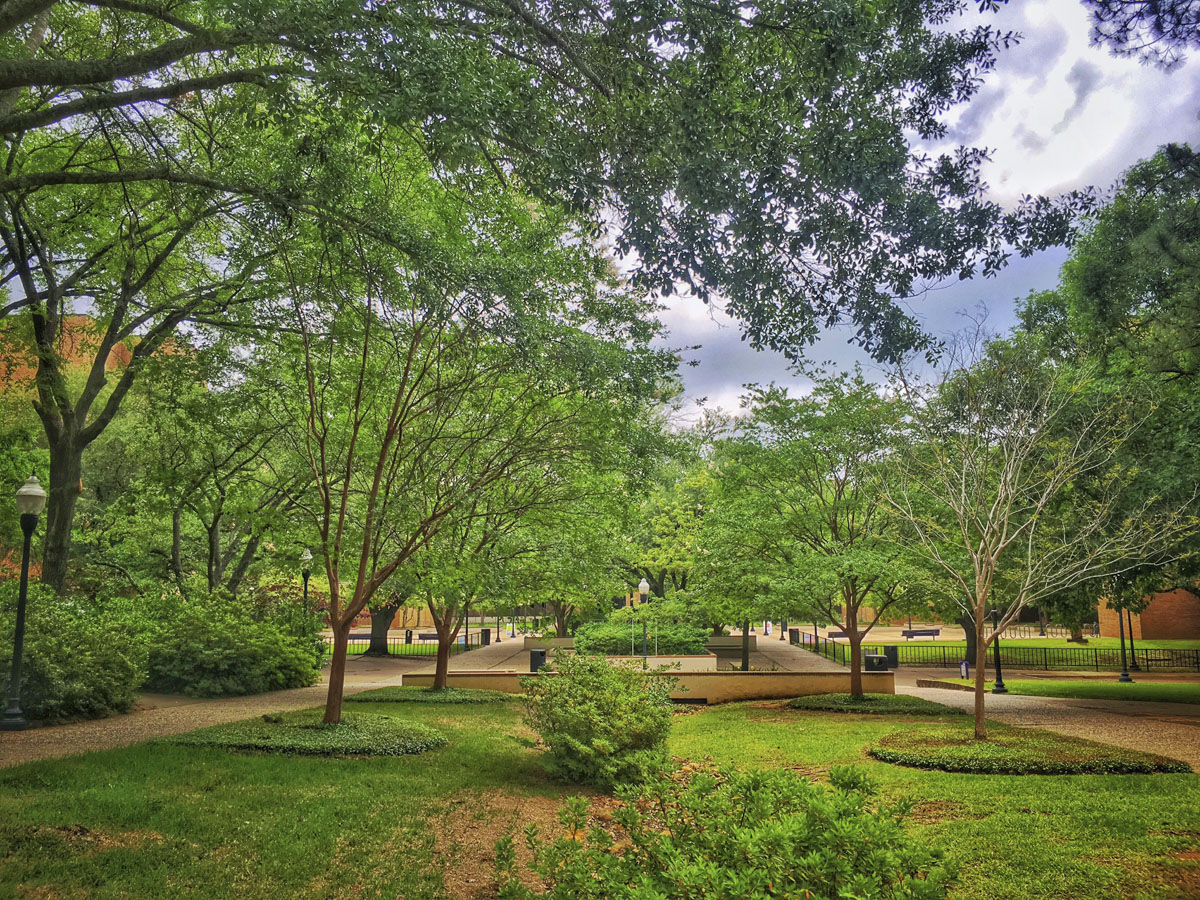I grew up a Lumberjack. My parents, Campbell and Peggy Cox, and most of my aunts and uncles are SFA alums. Additionally, my grandfather, Dr. J.C. Green, was a professor in the agriculture department for approximately three decades. As a native of Nacogdoches, my childhood was filled with attending SFA events such as Homecoming parades, sporting events and summer camps.
The university was a central theme during our family’s Thanksgiving and Christmas dinners. My grandparents, parents, and aunts and uncles often discussed legendary figures such as former SFA President Dr. Paul Boynton, who kept SFA from closing during the war years, or the tremendous growth that occurred under the leadership of Dr. Ralph Steen. My grandmother told the story of the Women’s Army Corps arriving by train at the old train station and then cutting a fine figure as they marched to the SFA campus. These conversations also featured legendary professors such as Drs. Frank Lauderdale, Archie McDonald and Jere Jackson, to name a few. Later, my nephews and I were able to add our own stories as we joined the ranks as proud Lumberjacks.
During my lifetime, I’ve witnessed many changes at SFA. I remember as a first-grade student riding with mother as she drove through the middle of campus on the way to Raguet Elementary before Raguet Street closed and became a pedestrian area. Years later as an undergraduate student, I met many friends and visited between classes there, which came to be known as “the wall.”
Another vivid childhood memory occurred one evening at an SFA football game in the mid-70s when the student section erupted in cheers as a streaker emerged from the field house wearing only a pair of tennis shoes and sprinted the length of the field before being apprehended by university police. My mother tried to shield my eyes, but as Ray Stevens said in his famous song about streaking, “It was too late. I had done looked.”
As an undergraduate and graduate student, and now a faculty member in the Rusche College of Business, I have witnessed much at SFA.
One of the most visible changes is student demographics. During the past 25 years, student enrollment has diversified, helping to close the gaps, and, as a result, a new generation of educators, nurses, business leaders, foresters and artists are taking on leadership roles in our state and country.
Another interesting and pleasant change has been the increase in international students. During the past few years, I’ve taught students from France, Croatia, Africa, China and Pakistan. These students offer a rich and varied perspective on issues we discuss in class, and their contributions to lectures aid our business majors in obtaining a better view of global business.
The increase in first-generation college students is another important shift. As a faculty member who performs academic advising, I work closely with students from their freshman year up to graduation. Many students are the first members in their family to attend college. I always smile when I see a first-generation student cross the stage at graduation because I know that the college degree he or she just received will unlock opportunities not only for the graduate but also for his or her children and grandchildren. I hope someday multiple generations of their family will join mine in sharing fond memories of SFA around the dinner table.
Looking back at all the changes I’ve seen, one thing has not changed — college students are still college students. Recently, I was standing in line to order a pizza in the student center and couldn’t help overhearing a freshman group conversation. The group was discussing plans for the weekend, and the main topic was a toga party. As a middle-age professor, I flashed back in my mind to when I was a student a generation ago. I smiled and said silently to myself, “Toga! Toga! Toga!”
The more things change, the more they stay the same.


